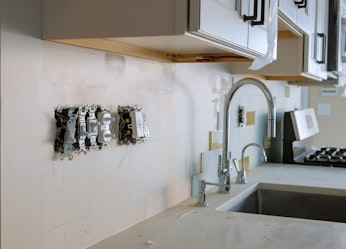

M|O Perspectives
Check back here for our thoughts on the latest developments in our industry.
How will HUD's new FHA safe harbors impact you?
Feb 04, 2021
As those of us working with multifamily housing projects know, some of the greatest challenges we experience are related to ensuring that design and construction teams are using the most stringent of both Federal law and local code.
On December 8, 2020, HUD published a final rule in the Federal Register amending HUD's Fair Housing Act (FHA) design and construction regulations. Set to go into effect on March 8, 2021, this rule incorporates the 2009 ICC A117.1 as a Fair Housing Act (FHA) safe harbor as well as the 2009, 2012, 2015 and 2018 editions of the International Building Code (IBC) as safe harbors.
The new safe harbors will be in addition to the ten currently recognized safe harbors for compliance with the FHA.
So, what do you need to know?
None of the ten existing safe harbors recognized by HUD are aligned with the most up-to-date model codes that are generally adopted and amended by local jurisdictions. Inherently, this brings design and construction challenges to projects.
Once this new rule goes into effect in March, design teams will still be able to choose to which safe harbor they want to design to—but now there will be additional options. HUD recognizes a variety of safe harbors to meet FHA regulations in order to provide a range of options that—if followed in their entirety without modification or waiver—will keep residential buildings compliant with the FHA. HUD-DOJ Joint Statementhas published specific language about cherry-picking from different safe harbors:
The safe harbors “are safe harbors only when used in their entirety, that is, once a specific safe harbor document has been selected, the building in question must comply with all of the provisions in that document that address the Fair Housing Act design and construction requirements to ensure the full benefit of the safe harbor. The benefit of safe harbor status may be lost if, for example, a designer or builder chooses to select provisions from more than one of the above safe harbor documents, from a variety of sources, or if waivers of provisions are requested and received. If it is shown that the designers and builders departed from the provisions of a safe harbor document, they bear the burden of demonstrating that the dwelling units nonetheless comply with the Act’s design and construction requirements.”
New safe harbors in practice: Bathrooms and kitchens.
The new safe harbors are generally aligned with the current codes (minus any local amendments to the IBC), which may make it less complicated by limiting the layers of the requirements.
A very basic, yet classic, example (we can all relate to) is: Where _exactly _should a toilet be located with respect to side wall? The FHA requires the centerline of the toilet to be 18" from the adjacent side wall and at least 15" from a wall-hung lavatory or vanity. Under the current code, the centerline of the toilet can be located between 16" to 18" from the sidewall. Thus, to meet both Federal law and local code requirements, the centerline is required to be 18" exactly from the side wall, which is hard to achieve in the field. Under the new safe harbors, toilets at side walls will be allowed to be centered 16" to 18", which allows 2" of construction tolerance at installation. Bye-bye, off-set flanges!
On the other hand, when it comes to kitchen outlets, the new safe harbors will be more stringent. Currently, the FHA requires only one outlet per “area” (area is not defined); whereas the new safe harbors require all but one outlet per "area" with "area" defined more specifically as a counter space uninterrupted by an appliance or a sink.
Bottom line: These new safe harbors will make installation of some elements easier, but more difficult for others.
In addition to the new safe harbors coming next month, it is our understanding that an updated version of the Fair Housing Design Manual is in the works. The Design Manual is an illustrative guide to understanding compliance with the FHA. Apparently, a draft is out to HUD for review, but we may not see it for a year or more, depending on how HUD moves forward with its peer review of the document.
At Marx|Okubo, we have a deep understanding of the various safe harbors, their pros and cons, what to anticipate, and how to make sure residential projects are set up for success to mitigate risk and avoid future field issues. Things will happen in the field, and Marx|Okubo can help by identifying noncompliant field issues and collaborate with the team to assist with reasonable solutions. If you need help understanding these new forthcoming requirements or would like to learn more about our services, please contact Angela Shapiro or Sarah Strauch.

What we do.
- Owner's Representation
- Property Condition Assessment
- Project Management
- Constructability Reviews
- Repair | Reconstruction
- Facility Condition Assessment
- Construction Loan Monitoring
- Accessibility
- Building Enclosure
- Fire | Life Safety
- Mechanical | Electrical | Plumbing
- ESG | Sustainability & Resiliency
- Structural Engineering
- ASAP® - Automated Structure Alert Program
Marx|Okubo is a national architecture/engineering/construction consulting firm that works with real estate owners, investors and lenders—at every point of the property lifecycle—to evaluate their building projects, solve complex challenges and implement tailored solutions. We help clients understand their projects’ complexities, so they can make more informed decisions and, ultimately, mitigate their risk.




